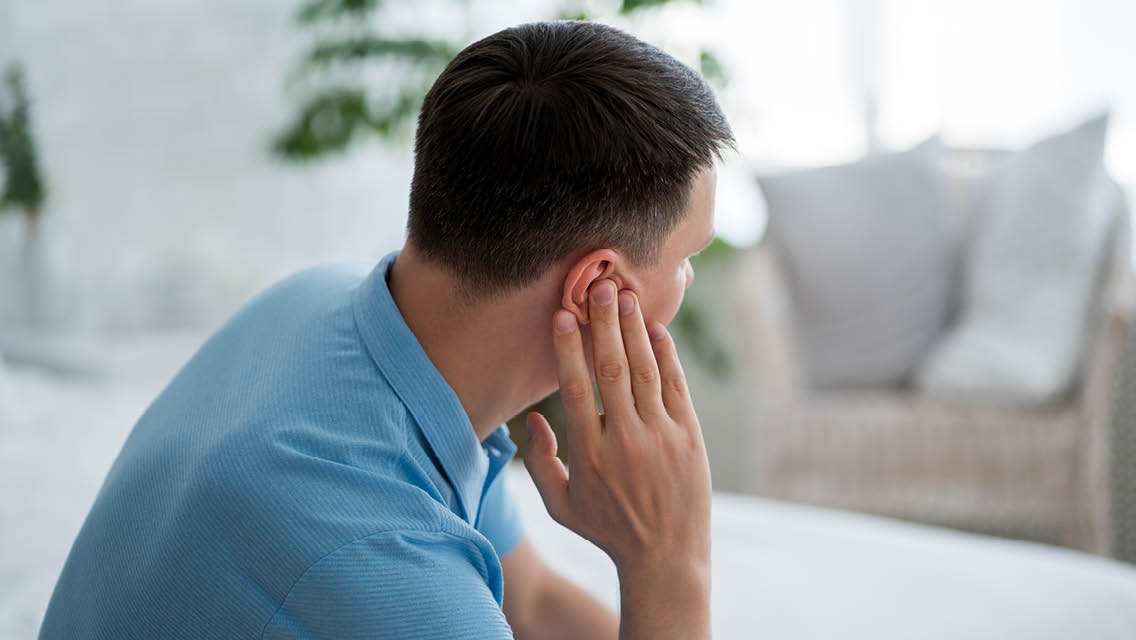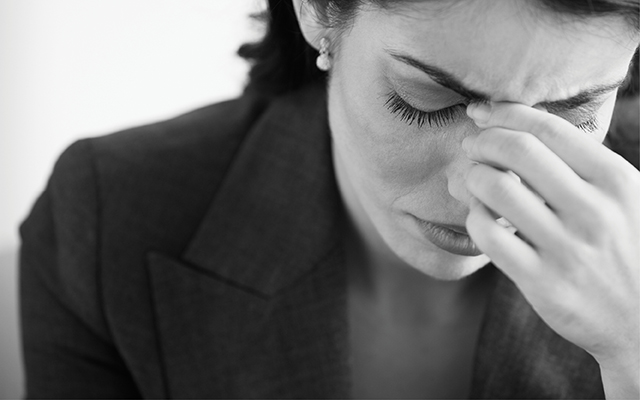Several conditions can drive maladaptive changes in your brain’s balance and sensory-processing systems. Specific causes, symptoms, and treatments may differ, but they all share a common thread: Your brain is struggling to recalibrate after a destabilizing event. These five conditions can all correspond to chronic dizziness.
Persistent Postural Perceptual Dizziness (PPPD or Triple-PD)
PPPD typically develops after an illness or injury that affects balance. These include vestibular neuritis (inflammation of the vestibulocochlear nerve of the inner ear), concussion, and benign paroxysmal positional vertigo. It can also be triggered by acute stress, a migraine or panic attack, or a fainting episode.
Research suggests that patients with long COVID may be more susceptible. Functional neurologist Jeremy Schmoe, DC, DACNB, often sees patients with PPPD-like symptoms after they’ve experienced immune stressors, including mold exposure, Lyme disease, and chronic gut infections.
With PPPD, the brain is stuck in a heightened state of vigilance, misinterpreting normal movement and visual input as a threat. You may feel unsteadiness, motion sensitivity, lightheadedness, or nonspinning dizziness. Symptoms often get worse when standing or walking. Visually busy environments, like grocery stores or crowded places, can also be a trigger.
Treatment may include vestibular rehabilitation therapy, which is designed to help you regain control of gaze stability, physical stability, and balance. Cognitive behavioral therapy can retrain your brain and reduce symptoms. Medication may also be beneficial.
Schmoe often recommends an anti-inflammatory diet to support treatment. “If you’re doing these things and you’re still not feeling well, there could be something underlying going on that’s causing inflammation in the nervous system,” he says.
Benign Paroxysmal Positional Vertigo (BPPV)
BPPV occurs when calcium crystals called otoconia become dislodged from their usual location in your inner ear and move into the semicircular canals that help control balance. When you move your head, the dislodged crystals shift, sending signals to your brain that trigger sudden, intense vertigo. You may also feel nausea, unsteadiness, or a sense that the room is spinning.
BPPV is more common in older adults, people with head injuries, and people with a history of inner-ear infections.
BPPV itself is not chronic: It can be treated using physical therapy techniques, including the Epley maneuver, to return the crystals to the otolith organs in your inner ear. Sometimes it even resolves on its own.
But because it can cause hypervigilance and a sensitization to triggers, BPPV can lead to PPPD. “In that case, it’s not the physical problem that’s making dizziness chronic. It’s because the brain has taken over,” says vestibular audiologist Yonit Arthur, AuD.
Post-Concussion Syndrome (PCS)
Up to 80 percent of mild traumatic brain injuries lead to post-concussion syndrome, which can involve headaches, brain fog, fatigue, and dizziness. Persistent PCS is diagnosed when post-concussion symptoms persist for more than three months after an initial concussion.
People with PCS may rely more on their vision than their vestibular and proprioceptive systems. Such reliance can overstimulate their nervous system, says Schmoe. “You may also have a sensation called vection, when you feel like you’re moving but you’re not.”
Anyone can develop PCS after a concussion, but it’s more common in those who have had multiple concussions, a history of migraine, or previous neurological conditions. “The concussion research is clear that psychosocial factors, including preexisting anxiety, are major risk factors for people developing chronic symptoms,” adds Arthur.
Recovery is typically nonlinear and takes time. Treatment may include physical therapy, vestibular therapy, cognitive therapy, or lifestyle adjustments.
Visually Induced Dizziness (VID)
Rather than a diagnosis itself, VID is a constellation of symptoms caused by dysfunction in the vestibular system and triggered when your brain struggles to process complex visual environments. Sometimes called visual vertigo, VID can be caused by a range of conditions, including head injury, BPPV, and vestibular migraine. It’s often a symptom of PPPD.
The mismatch between what you’re seeing and your body’s sense of movement and balance can make you feel dizzy, lightheaded, or unsteady. It can also cause nausea, headaches, brain fog, and a feeling of being “off” even when you’re sitting still. Common triggers include grocery-store aisles, busy or moving patterns, fluorescent lighting, and scrolling on your phone. Hypervigilance and anxiety perpetuate symptoms.
VID is more common in people with vestibular disorders, like vestibular migraine, or a history of concussions. If you are prone to motion sickness or spend extended time on digital screens, you may also be more vulnerable.
Treatment may include vestibular rehabilitation therapy and exposure training. Schmoe has found virtual reality can help desensitize some people.
Vestibular Migraine
Vestibular migraine can cause dizziness symptoms with or without a headache. Rather than reflecting a problem with the vestibular system, it affects the vestibular-associated processing systems in the brain, says Arthur.
Symptoms may include sudden or prolonged dizziness, vertigo, an off-balance feeling, or unsteady walking. You may also have other migraine symptoms, including nausea and vomiting, light sensitivity, and sound sensitivity. Symptoms can last minutes to days and occur with or without pain.
Anyone can suffer vestibular migraine, though people with a history of migraine headaches, motion sensitivity, or inner-ear disorders are most susceptible, says Arthur. It often runs in families and can be triggered by hormonal shifts, bright lights, and disrupted sleep. Stress is a big factor, as well.
Treatment may include vestibular therapy, medication, and migraine-management strategies. “With vestibular migraine, there’s a change in blood flow into the neurological circuitry of the brain as well as changes in inflammatory mediators, so people respond well to anti-inflammatory dietary approaches,” says Schmoe.
Unlike many practitioners, Arthur doesn’t recommend migraine diets and trigger diaries, which she has found cause people to focus too much on their symptoms.
“Having a healthy diet overall is important,” she says, “but people don’t need to be sitting around being vigilant. What they need is to stop being as afraid of their symptoms.”
Restore Your Balance
Dizziness disorders, including vertigo, often occur without a clear cause — and when they persist, they can seriously hamper quality of life. Mind-body methods might hold the key to recovery. Learn more at “How to Recover From Vertigo and Inexplicable Dizziness,” from which this article was excerpted.





This Post Has 0 Comments